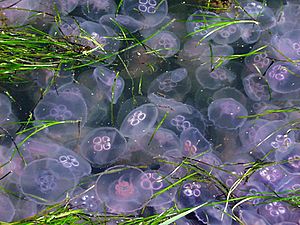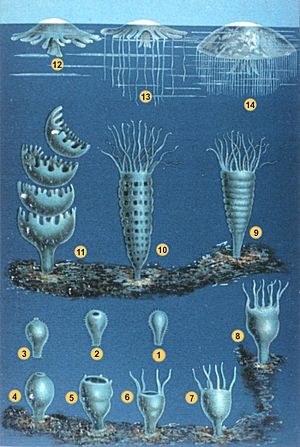Scyphozoa facts for kids
The Scyphozoa are a special group of animals, also known as the "true jellyfish". They belong to a larger family called Cnidaria. There are about 200 different kinds of these jellyfish. The name Scyphozoa comes from an Ancient Greek word that means "cup," which describes their common shape.
These jellyfish mostly live as a bell-shaped form called a medusa. This is different from some other animals in their family that spend more time as a polyp (a tube-shaped form attached to something). Scyphozoans eat tiny living things like plankton, small crustaceans, and baby fish. They catch their food using special stinging cells called nematocysts. These stinging cells are found on their tentacles, which hang down from the edge of their bell-shaped body.
Scyphozoans have a soft, jelly-like material inside their bodies. They do not have any hard parts like bones. They also don't have a head or special body parts for breathing or getting rid of waste.
How Scyphozoans Move
Unlike some other types of jellyfish, scyphozoans do not have a velum. A velum is a circular membrane that helps other jellyfish push themselves through the water. Instead, scyphozoans move by squeezing and relaxing the muscles of their umbrella-shaped body. This action pushes water behind them, moving them forward.
Images for kids
See also
 In Spanish: Escifozoos para niños
In Spanish: Escifozoos para niños




